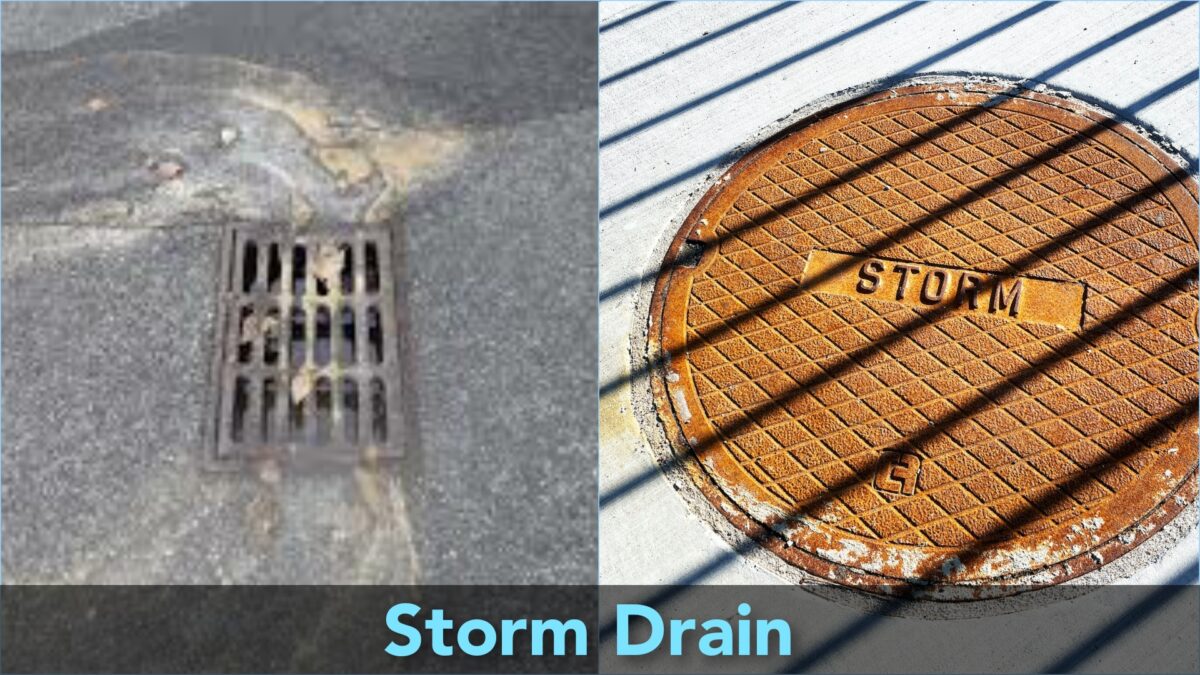Table of Contents
Storm Drain Meaning
A storm drain is a structure designed to channel or transport rainwater, typically through a channel or pipe. Storm drains can be found in residential or commercial areas, as well as in the larger drainage systems of cities. The use of trenchless construction is a highly efficient method for installing, repairing, or cleaning storm drains.

These types of drainage systems are often referred to as storm sewers, surface water drains, or stormwater drains.
Description
Heavy rainfall, frequent storms, or coastal towns necessitate the presence of a crucial infrastructure component called a storm drain. Storm drains are designed to receive water from street gutters, as well as gutters from houses and buildings in areas with heavy rainfall that can lead to flooding. They also serve busy roads, motorways, freeways, and other similar areas.
The primary objective of a storm drain is to prevent flooding and minimize the damage caused by heavy rain or other precipitation. Storm drainage systems usually consist of gravity sewers that drain untreated storm water into rivers or streams. Pouring hazardous substances into the drains is unacceptable because it can have harmful environmental effects.
In heavy rains or storms, the quantity of rain that falls can sometimes overwhelm storm drains, resulting in inundated drains that can cause basement and street flooding. To minimize this risk, many areas require detention tanks within a property that temporarily hold runoff during heavy rains and restrict outlet flow to the public sewer. This reduces the risk of overwhelming the public sewer.
It is important to note that in some cases, storm drains intentionally mix stormwater (rainwater) with sewage, such as in combined sewers, while in other cases it is unintentional. In areas with combined sewers, the stormwater and sewage mix is treated at a wastewater treatment plant before being discharged into a water body.
In areas with unintentional mixing, the untreated stormwater can end up in rivers, streams, or the ocean, which can have harmful effects on the environment and public health.
Hence, it is crucial to properly dispose of hazardous waste and avoid littering or dumping in areas near storm drains.
Functions Of Storm Drain
The storm drain system prevents flooding in urban areas by collecting excess water during heavy rainfall or snowmelt and channeling it away to nearby water bodies or drainage basins, reducing the risk of damage to buildings, infrastructure, and transportation, and ensuring pedestrian and motorist safety.
Filters and other devices equipped in storm drains remove sediment, oil, and other pollutants from stormwater runoff, thereby improving water quality, protecting public health, and reducing the risk of health hazards to people and wildlife.
Storm drains help to preserve the health and biodiversity of natural water bodies such as lakes, rivers, and streams by reducing the amount of runoff that enters them and thus minimizing disruption of the ecological balance and harm to aquatic life.
Stormwater runoff can erode soil and cause soil loss, stream bank destabilization, and other environmental problems. The storm drain system collects and channels runoff away from the urban area, preventing erosion and protecting the natural environment.
Managing stormwater runoff using storm drains helps to reduce the risk of infrastructure damage and associated costs by preventing flooding and erosion that can damage roads, bridges, buildings, and other infrastructure.
Advantages Of Storm Drain
- Storm drains efficiently collect and remove large volumes of stormwater runoff, preventing flooding and protecting property.
- Properly functioning storm drains improve safety by preventing slippery and hazardous conditions caused by standing water.
- Storm drains prevent soil erosion by preventing the accumulation of water on the surface.
- Storm drains reduce the spread of disease by preventing standing water from becoming a breeding ground for disease-carrying insects.
- Storm drains are generally considered to be a cost-effective solution to the problem of stormwater management.
- Storm drains help protect infrastructure such as roads, bridges, and buildings by preventing flooding and erosion.
- Storm drains can be designed to blend in with the surrounding landscape, creating a more attractive environment.
- Storm drains are relatively easy to install and can be customized to meet the specific needs of a particular area.
- Storm drains require minimal maintenance and can be cleaned and inspected on a regular basis to ensure proper functioning.
- Storm drains promote environmental sustainability by helping protect natural habitats from erosion and reducing pollution caused by stormwater runoff.
Disadvantages Of Storm Drain
- Stormwater runoff can carry pollutants such as oil, trash, and chemicals into storm drains, which can lead to pollution of waterways and harm to wildlife.
- Debris can block storm drains, causing water to back up and flooding to occur.
- Repairs to storm drains can be expensive and time-consuming if they become damaged.
- In areas with high levels of rainfall, storm drains may have limited capacity and be unable to handle the volume of water, leading to flooding.
- In some cases, storm drains can be unsightly and may negatively impact the aesthetic of an area.
